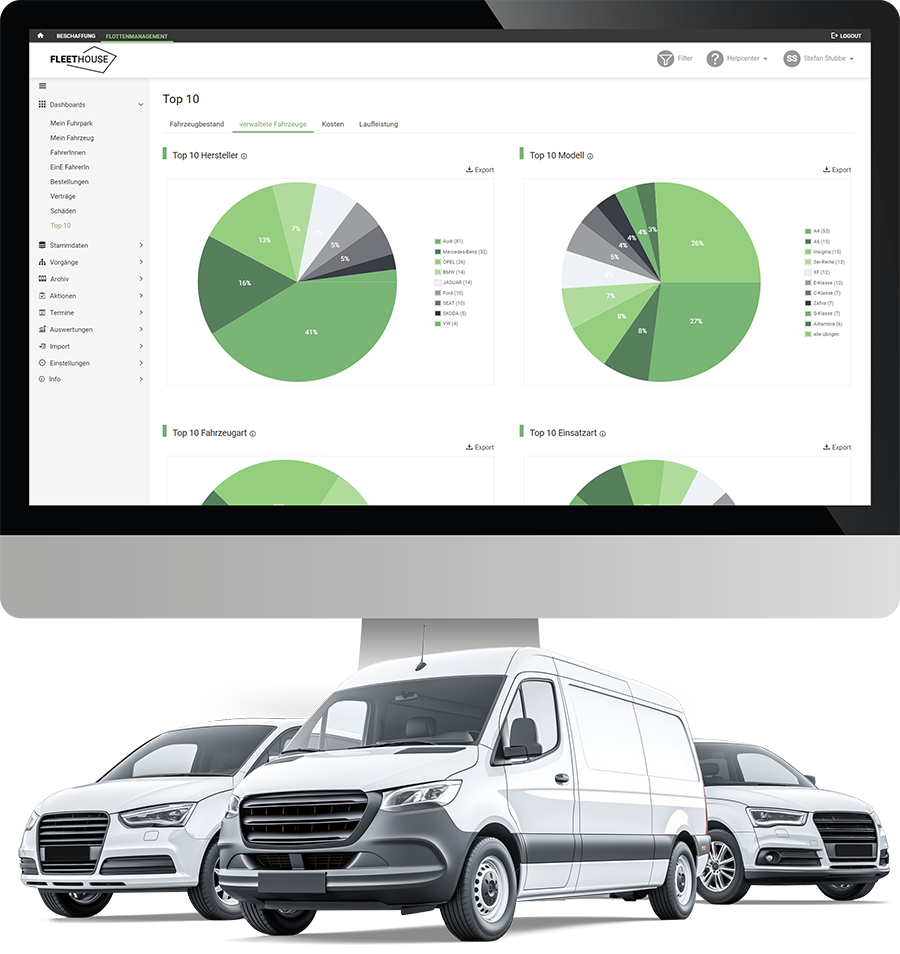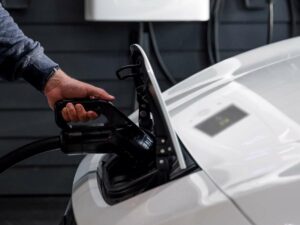The requirements for climate-friendly mobility and the desire to positively strengthen a company’s own image are making e-vehicles increasingly relevant for fleets. A recent analysis by data specialist Dataforce confirms this with figures: In the fleet market, the number of registrations of all-electric cars in May 2023 almost doubled compared to the same month last year. At 19.9%, they have thus achieved their highest market share of company cars to date.
Companies should draw up an e-car policy to ensure the successful electrification of their vehicle fleet. In this article, you can find out what such a company car policy for electric cars should take into account.
Contents
What is an e-car policy?
An e-car policy is a specific company car policy that defines all the rules for the purchase and use of e-vehicles in the company fleet. The rules and obligations set out in the policy apply to the company and all drivers. As a central set of rules, the e-car policy can either be drawn up as an independent guideline or incorporated into a general car policy.
What aspects should be covered in a car policy for e-vehicles?
The exact content of an e-car policy can vary depending on the specific requirements, goals and specifications of the respective company. It is therefore important to adapt the company car policy to the individual needs and circumstances of the electric vehicle fleet. The general aspects that should be taken into account in an e-car policy include the following points, which we will discuss in more detail in the following sections.
Acquisition of e-vehicles
Before rules for the use of electric cars in the fleet can be established, specifications for the purchase, equipment and subsequent expansion of the vehicles should be defined in an e-car policy. The policy should therefore define certain requirements for the selection of electric vehicles, such as preferred vehicle models or brands, range, charging infrastructure compatibility or battery capacity or charging power.

Testing electric vehicles?
With a car subscription, you can test without obligation whether an electric car is suitable for your fleet. With no hidden costs and a term of just one month.
Charging options and calculation of charging costs
E-vehicles can be charged on the road, at work or at home. The e-car policy should therefore specify which options are available to drivers and how the charging costs are billed if the car is charged at the wallbox at home, for example. The e-car policy also specifies what type of charging stations are provided at the company site or other locations and how access to public charging stations is regulated.
Loading at the company site
Time restrictions and different charging tariffs can be set for charging at the workplace. In most cases, charging on company premises is usually free of charge and tax-free for drivers. E-vehicles with short downtimes may require corresponding fast charging points to charge the car in good time.
Charge at home
For home charging, the purchase of a wallbox and the billing of charging costs must be clearly regulated. Many companies cover the costs of purchasing and installing a wallbox or lend their employees a charging station in the form of a leasing model. The electricity costs can be billed at a flat rate or exactly according to kWh using a separate electricity meter.

Insurance and liability
Like a conventional combustion engine, an e-vehicle also requires motor vehicle insurance and, if applicable, fully comprehensive insurance. However, the battery drive has an impact on the risk assessment. Although the safety of batteries is continuously improving, operating errors during charging or improper handling can lead to short circuits, electric shocks and damage to the vehicle. It is therefore important that the company disclaims liability towards company car drivers. Otherwise, the company can be held liable if an incorrect refueling process leads to a short circuit and consequently to a fire. The extent to which drivers of electric vehicles are involved in self-inflicted accidents is also clearly regulated in the e-car policy.
Dynamics of car policies for e-vehicles
The development of electric cars is progressing rapidly, the models are constantly evolving and the ranges are also constantly improving. An e-car policy therefore needs to be flexible and dynamic in order to keep pace with changing conditions.
A car policy for the gradual switch to electromobility
A car policy is an important tool for making a significant contribution to greater climate and environmental protection in the vehicle fleet. Thanks to it, clear specifications and targets can be set to reduce harmful emissions for a more climate-friendly fleet. On the one hand, companies can set a CO2 limit value in the car policy that can only be met by a high proportion of e-vehicles. Or company car drivers can only choose between different e-vehicle models when purchasing new company cars. With a bonus-malus system, for example, employees who opt for a low-emission vehicle can be rewarded with a higher leasing rate subsidy. Alternatively, drivers can choose better equipment if they opt for a more environmentally friendly model.
Arrange an online consultation appointment
Arrange your personal consultation appointment now. You can easily select a suitable appointment using our booking tool.

Anne Fuchs

Ciara Lazeta
The most important facts about the car policy for e-vehicles
An e-car policy covers all obligations and rights relating to the purchase and use of e-vehicles in the company's own fleet.
Access to charging facilities and the billing of electricity costs should be clearly regulated in a car policy.
A disclaimer allows companies to minimize their own liability risk, for example if a fire occurs due to incorrect loading.
Further Fleet Knowledge
If you liked this article and would like to know more about this topic, we recommend these articles.

E-car as a company car: taxes, costs and insurance




